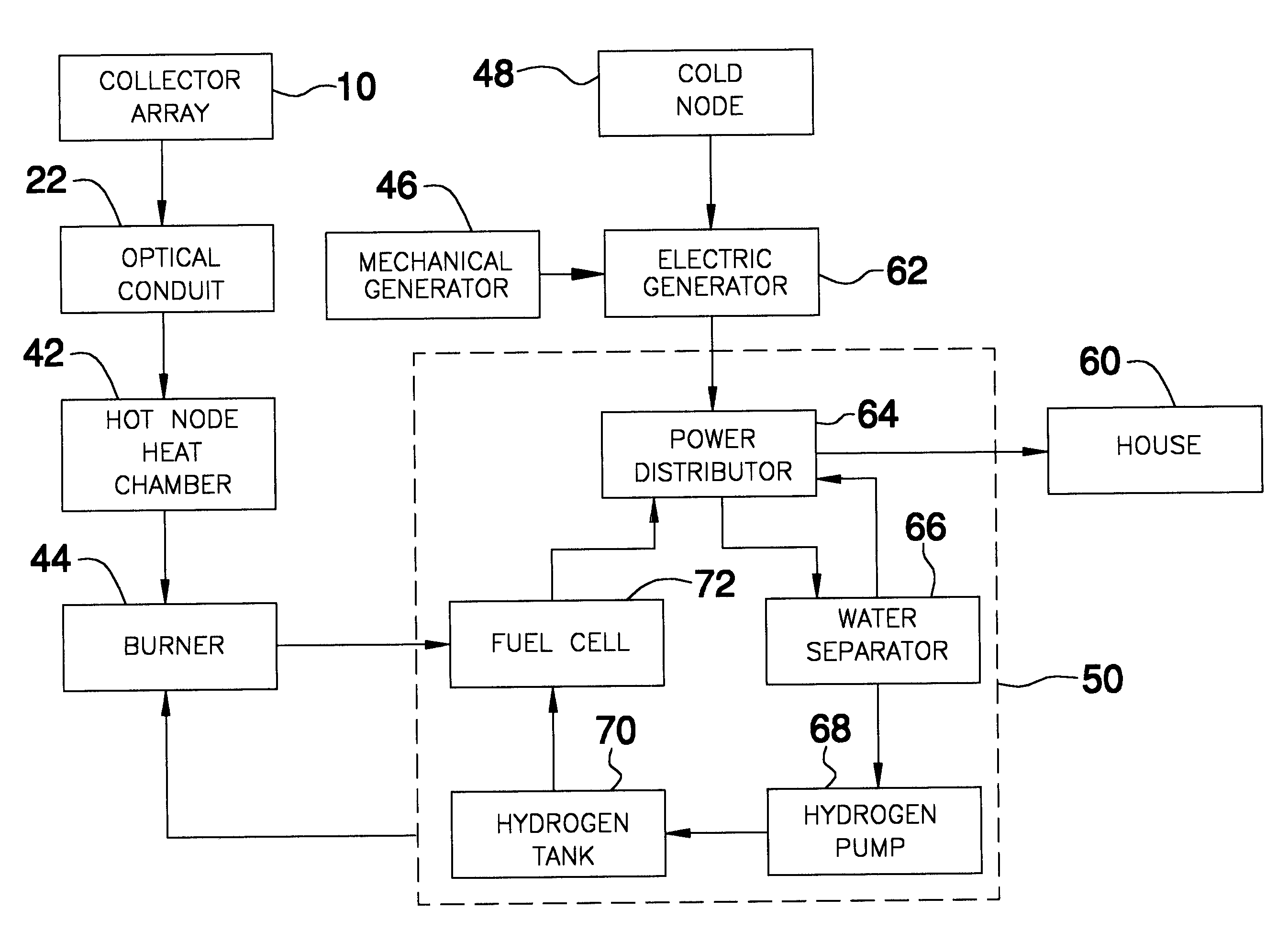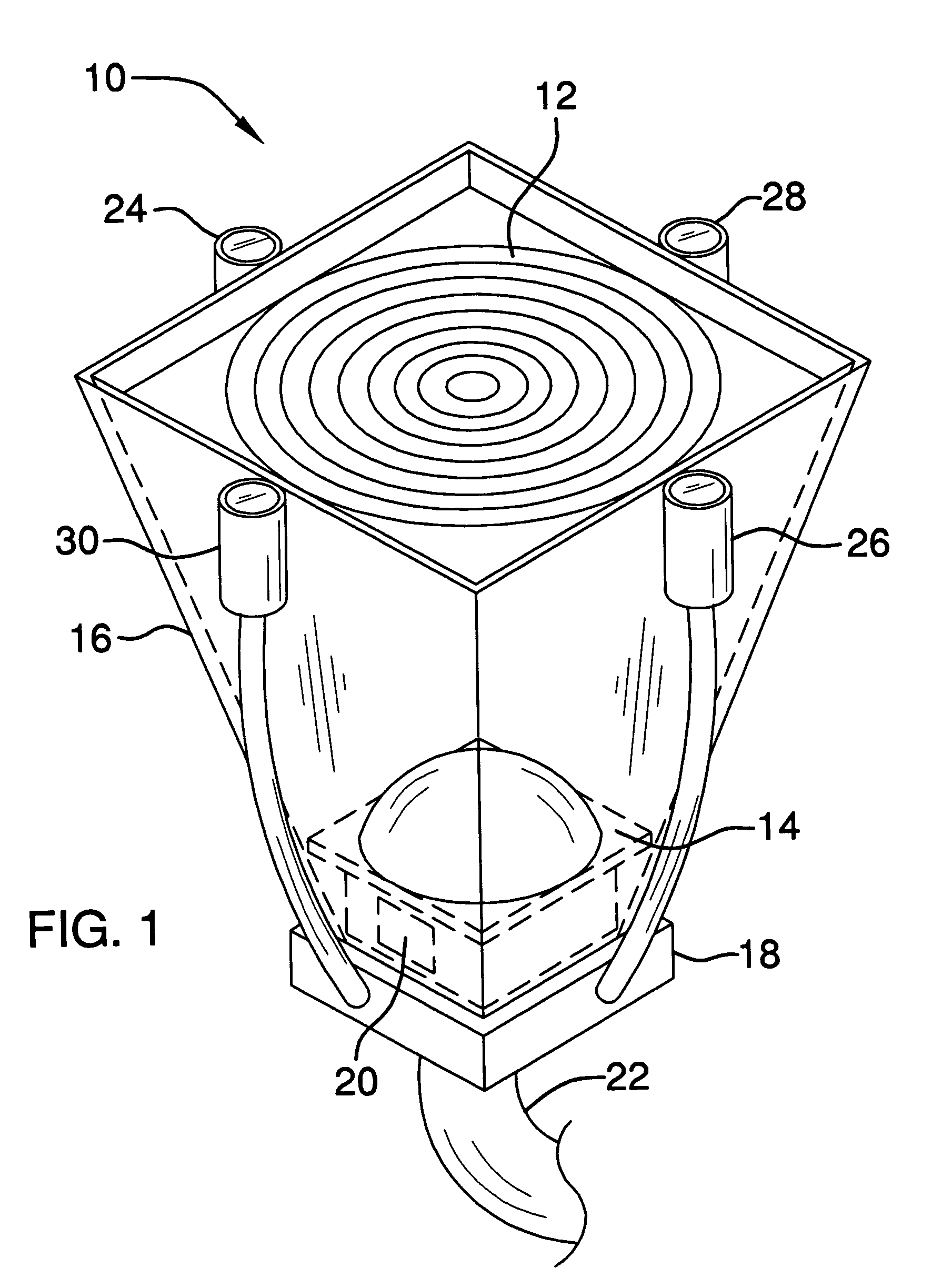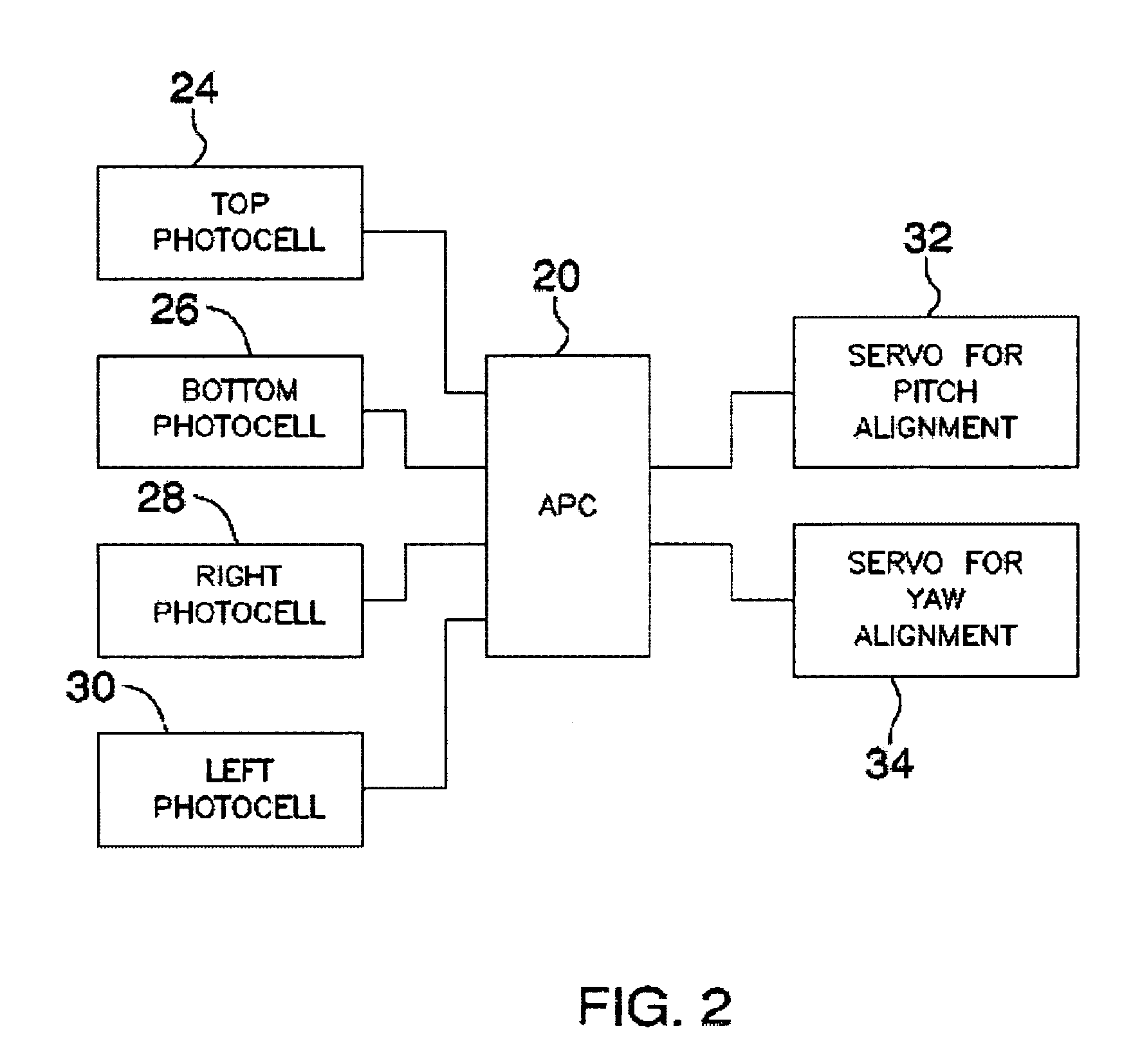Mechanical-thermal solar power system
a solar power system and solar energy technology, applied in the field of mechanical thermovoltaic solar power systems, can solve the problems of not revealing the automatic light collector-aiming feature for maximizing the overall efficiency of the system, and achieve the effects of low manufacturing cost, low price of sale, and easy and efficient manufacturing and marketing
- Summary
- Abstract
- Description
- Claims
- Application Information
AI Technical Summary
Benefits of technology
Problems solved by technology
Method used
Image
Examples
Embodiment Construction
[0034]Referring now to the drawings, and particularly to FIGS. 1-4, a preferred embodiment of the mechanical thermo-voltaic solar power system of the present invention is shown and generally designated by the reference numeral 10.
[0035]FIG. 1 is a perspective drawing of the light collection element 10 used in the preferred embodiment of the mechanical thermo-voltaic solar power system constructed in accordance with the principles of the present invention. The system is essentially comprised of three major subsystems: (1) the solar collector array, (2) a mechanical thermo-voltaic generator, and (3) a storage and retrieval system, with the solar collector array along with the combination of these three subsystems being central to the invention. More particularly, the solar collector array is comprised of an area array of light collector elements 10, which can be mounted in an area that receives good daylight, such as an open field or a roof. Each collector element 10 is comprised of a...
PUM
| Property | Measurement | Unit |
|---|---|---|
| electrical power | aaaaa | aaaaa |
| area | aaaaa | aaaaa |
| power generation efficiency | aaaaa | aaaaa |
Abstract
Description
Claims
Application Information
 Login to View More
Login to View More - R&D
- Intellectual Property
- Life Sciences
- Materials
- Tech Scout
- Unparalleled Data Quality
- Higher Quality Content
- 60% Fewer Hallucinations
Browse by: Latest US Patents, China's latest patents, Technical Efficacy Thesaurus, Application Domain, Technology Topic, Popular Technical Reports.
© 2025 PatSnap. All rights reserved.Legal|Privacy policy|Modern Slavery Act Transparency Statement|Sitemap|About US| Contact US: help@patsnap.com



